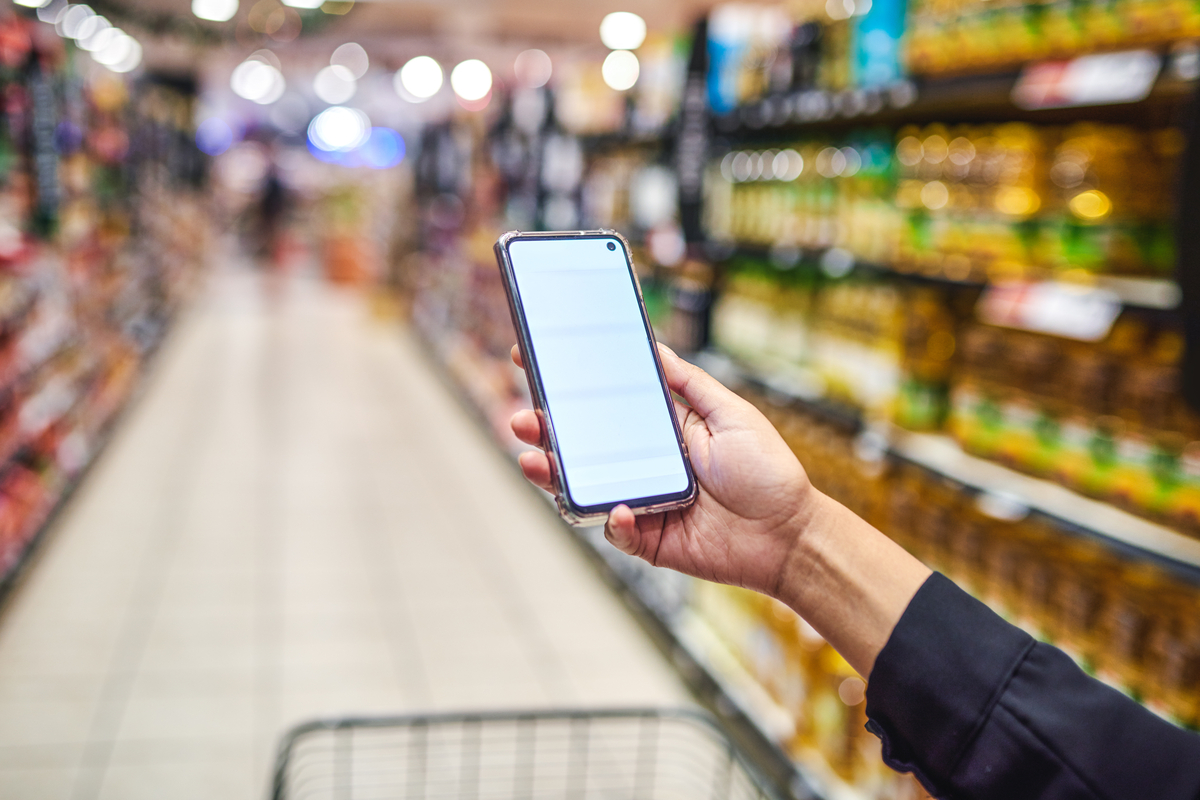Why retailers want retail media revenue so badly
Omnichannel is expensive. While it is essential to serve shoppers in all the ways they desire, digital sales may not add significantly to the top line. In essence, digital sales cannibalize trips from shoppers that (hopefully) are already loyal. They add new order fulfillment costs. They create new pressure to sustain the service experience. Retailers pay dearly for the added complexity, which has made them more motivated to find new profit centers to offset the cost.
At the same time, major food retailers have been watching the massive digital advertising revenues being captured by Google, Meta, and most painfully, Amazon, which competes most directly in their product categories. Why not pursue some of those revenues?
Busy online grocery retailers now understand that their audiences are large enough, frequent enough, and relevant enough to be of interest to national advertisers. Their ability to personalize messages and offers via shopper loyalty programs and digital selling platforms makes them an efficient promotional channel for consumer brands.
When retailers talk about “monetizing” their shopper data, what they really mean is being compensated for delivering accurately personalized messages and offers on behalf of brands. Those ad sales carry far greater margins compared with product sales, and those profits have the potential to offset some of the costs of operating the omnichannel enterprise.
The benefits of retail media
Here are some reasons why retail media is important for retailers, brands, and consumers:
- Explosive growth. The global retail media market is projected to expand to $75.1 billion in 2022, an increase of 80.1% from 2021. [Coresight Research Evolution of Retail Media]
- Attractive margins. Food retailers are challenged to cover the incremental expense and complexity of their digital ordering and fulfillment operations. Many see high-margin incremental revenues from retail media networks (RMNs) as a means to offset these costs.
- Latent value. Brands are understandably wary when retailers ask them for additional media spending, but these same brands are also always seeking more targeted and efficient means to reach consumers. Retailers’ loyalty and transaction data can help accomplish this critical task.
- Advertiser mindset. Brands and agencies have grown accustomed to the self-service methods of so-called “programmatic” digital advertising, and many media planners prefer this method. For RMNs, that means a self-serve collaboration platform will be the preferred way to make and implement advertising planning decisions and post-campaign metrics.
- Need for transparency. If shopper data and insights are delivered in a highly visible manner via a collaboration platform, brands will be able to evaluate their return on ad spend (ROAS) accurately and negotiate in a fact-based manner with their retail partners.
- Customer-first. The increasingly savvy consumer is looking for better value and savings more than ever before. Intelligent personalization at all digital touchpoints makes offers more efficient.
Retailers have historically been reticent about sharing transaction log (T-Log) and loyalty data with their vendor partners, and even when they do so the methods have been clumsy. The introduction of collaborative data sharing platforms in recent years helped set the stage for RMNs by streamlining hyper-targeted media and personalized promotion planning.
Incorporating audience building and media planning tools can enable brands to zero in on the right consumers with the right offers and very little waste. When the same platforms incorporate highly reliable measuring tools, the value loop can be successfully closed.
The budget conversation can be uncomfortable
Retailers and brands share a long history of supplier investments to drive product sales in-store that pre-dates digital retailing. In-store promotion channels like Catalina Marketing and Actmedia’s Instant Coupon Machines became familiar in supermarkets in the mid-1990s. Walmart introduced its in-store video network at about the same time.
Those innovations were controversial in their day because they involved a retailer asking their suppliers for additional consumer marketing funds to support their in-store channels. We say “additional” because brands already were investing significant sums in trade marketing programs and allowances to ensure display promotions, ads in the circular, coupons, and temporary price reductions.
Some brand marketers at the time perceived those retailer demands as a “tax” that they could not decline to pay if they wanted to keep their products on store shelves. Since their total rate of marketing investment was a fixed quantity, participating in trade marketing programs meant reallocating funds from other consumer promotions or national advertising budgets.
Today’s new emphasis on retail media networks sets up a similar tension. RMN’s will primarily be funded by marketing funds from endemic product suppliers. Those dollars must come from somewhere else in their budgets. For RMNs to be successful, they will need to be structured in ways that deliver clear, measurable ROAS to suppliers. Proof of value will be of paramount importance in joint planning conversations.

NielsenIQ Activate
The ultimate SaaS customer value platform offering retail intelligence, brand collaboration, personalization and retail media
Self-service and visibility
While the largest retailers have been developing their RMNs now for several years, even they are relative latecomers to the digital advertising discipline compared with Amazon and Google. Many of their suppliers have been promoting their brands via digital channels for more than a decade and their media expert and agencies have attained some mastery of their self-service platforms and the methodology known as “programmatic” advertising.
Programmatic advertising is defined as the use of software technology to automate digital media buying. In 2021 it amounted to about $167 billion in spending in the U.S. and $418 billion globally. [Statista]
Retail Media Networks are now being positioned to conform with the programmatic techniques widely employed by media buyers. This is crucial because brand owners must make frequent spending decisions across a variety of digital advertising and promotional channels. They seek audience scale and have no time to learn and combine novel methods. They need tools and metrics that allow them to rapidly compare their options.
The very largest retail chains—like Walmart, Kroger, and Carrefours—have invested heavily to construct self-service media buying solutions for their RMNs that conform with the expectations of advertisers. Retailers in the next tier in terms of audience size are adopting RMN solutions from technology partners with proven functionality for media buying, audience modeling, and campaign metrics.
Deriving value from consumer insights
The new era of retail media is a prime collaboration opportunity for retailers and brands.
“Retail media offers both players an opportunity to deepen and evolve their interdependent relationship into one that’s more strategic and benefits the end consumer as well,” says a recent analyst report from Forrester Research, “The State of Retail Media.”
Retailers certainly benefit from high-margin incremental ad revenues, but they also gain incremental product sales when their suppliers use their RMNs to promote their brands. Reporting visibility from their collaboration platform enables them to have fact-based dialog with brands and continually refine their personalization technique.
Brand marketers gain access to shoppers in new, data-driven ways that enable them to efficiently create awareness and deliver the right messages and offers within the context of the shopping experience. Derived learnings will influence their product marketing decisions across nearly all dimensions.
Consumer benefits should not be underestimated in this context either. Highly relevant personalized offers provide monetary value as well as product discovery and experiences.
These exciting gains materialize in the context of a shared RMN platform, in which shopper data can be appropriately accessed by brands to guide their media investments and creative approaches with a clear understanding of ROAS.
“The trend is to integrate analytics, insights, activations, and measurement into one simple platform. This enables the retailer and the brand to enable the right roles to oversee the true value being derived from every promotion or campaign,” says Xavier Facon, Global Head of Retail Media at NielsenIQ. “This type of automation is what drives continued investment in Retail Media.”

The executive’s guide to retail media mastery
What do retailers and brands need to know to win with intelligent digital marketing in the post-cookies era? This guide is intended to provide a practical perspective for managers who occupy both sides of the retail media buying table.




